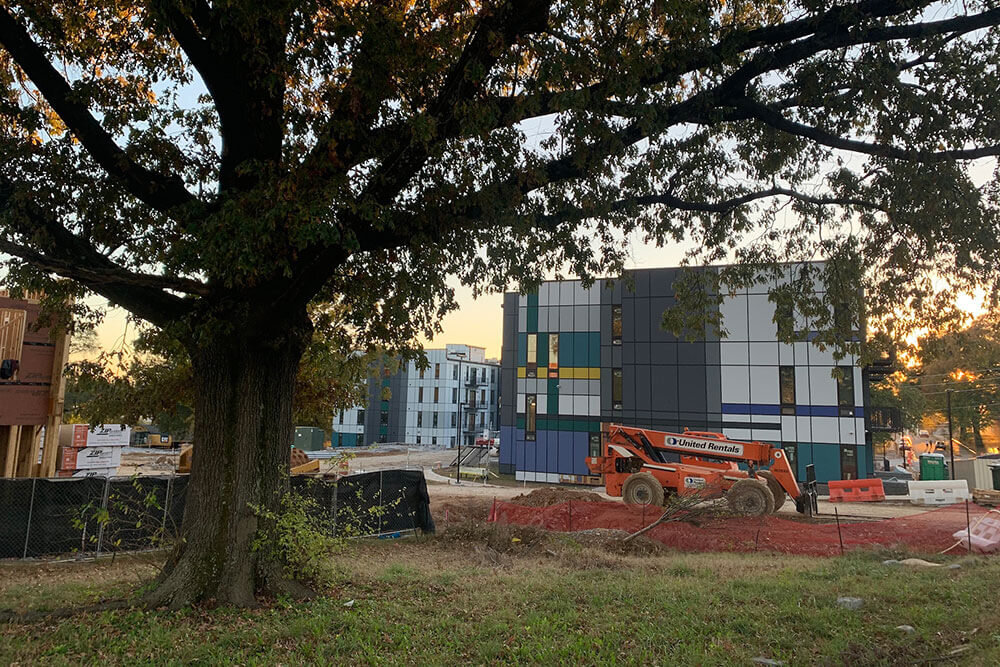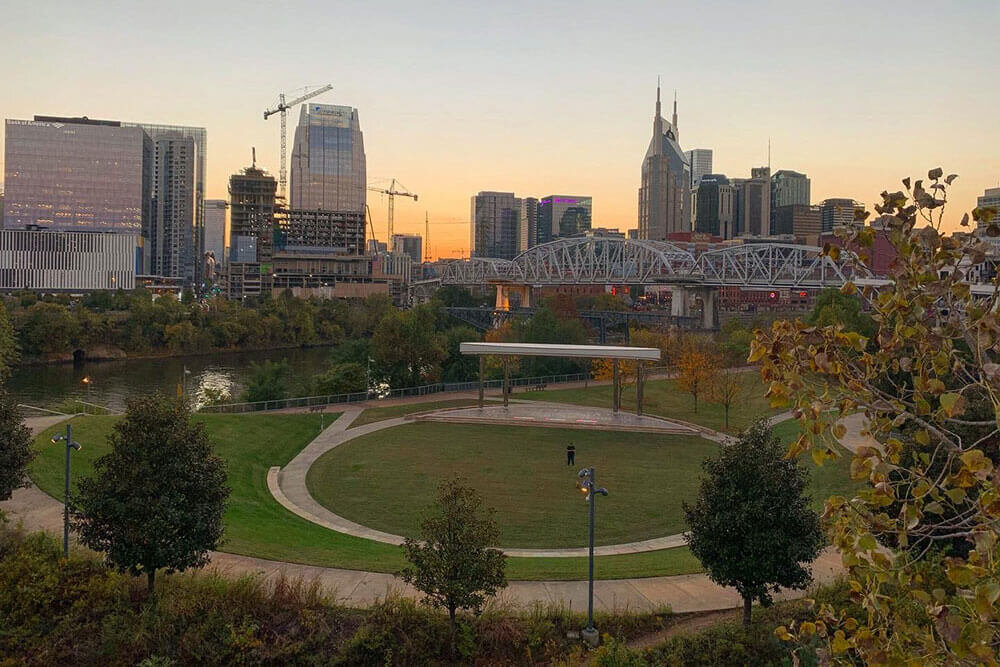How Trees Help Limit Stormwater Runoff
How Trees Affect Stormwater Runoff
Stormwater Management
Water runoff and flash floods from storms are an all-too-familiar nuisance for rural, urban and suburban residents alike. Heavy rains fill streets, yards and fields with water. Home foundations can be damaged, and travel becomes dangerous or difficult. Public health concerns like mosquitos and mold arise due to standing water as well. As the Nashville metropolitan area grows, less permeable ground means that stormwater management is becoming a more persistent problem. Luckily, a green contribution to the solution is planting more trees!
A single large, established tree can make a significant difference in rainwater absorption.
Nashville’s stormwater management system drains water to prevent flooding after heavy rains, but more hard surface covers have been leading to more frequent overloads. This is because these water systems were designed before much of our city was paved over or developed -- and the ground was able to absorb more of the excess water. A 2020 study by Jasmine K. Thom et al. on stormwater control measures suggests that the efficiency of a city’s water management can be improved by having more trees and channeling water runoff toward them.
How Does Stormwater Management Work?
Trees absorb water through their roots, and the water is used to nourish and build the tree’s structure. Water that doesn’t stay in the tree is released into the air through the leaves in a process known as evapotranspiration. This passage of water from rain to the ground and back into the air constitutes the water cycle. When rain falls onto impermeable surfaces like asphalt, concrete and roofs, the water can’t get through and must go somewhere else. The study by Thom et al. shows that when water is directed to trees using trenches, a mature tree can reduce the amount of stormwater runoff by absorbing some of the water. The authors note that annual stormwater retention was 24% of runoff.
Planting large canopy trees in your yard is one way you can help alleviate stormwater runoff problems in your neighborhood.
Nashville Mayor John Cooper’s office has acknowledged that stormwater problems are growing in many neighborhoods because of climate change and the city’s record growth in recent years. The Metro budget for fiscal year 2022 allocates several hundred thousand dollars for tree planting, planning and maintenance, responding to the increased need for flood control. The mayor’s office, by recognizing the importance of permeable green cover, is engaging in the strategy that Thom’s article suggests is the right one: planting trees to reduce the need for catchment system expansion, prioritizing both canopy cover and stormwater control measures within tight and scarce urban space.
How Can We Go About It?
For communities, planting trees along roads and sidewalks will help absorb and capture water that might otherwise block those passageways. Thom’s article highlights the use of trenches that channel water to urban trees’ planters, where the tree absorbs much of the water directed to it. These are called tree pits, and they ease the burden placed on centralized water systems.
Urban trees help to absorb runoff from adjacent paved areas.
Homeowners can work with the topography of their property to direct water away from their house and toward the trees in their yard as well. Sloping land known as a swale can help channel water to lower ground. Planting many trees of various heights in the yard, as well as native shrubs and plants, will ensure complex root systems that absorb water and hold soil in place, preventing erosion or surface-level water buildup. Mature, well-established trees, however, will have the biggest root systems and will take up the most water. Even if your yard doesn’t have many (or any) mature trees, planting some now is important because, even though they take decades to reach maturity, trees of all ages are important for a healthy canopy ecosystem.
Your Yard’s Role
You don’t have to live in a floodplain zone for rainwater management to be an issue when strong storms pass through and flash floods overwhelm your neighborhood’s streets. Since the majority of a city’s green space is private property, homeowners can make the decision to integrate more trees to help control water in and around their yard. Trees should be planted strategically -- that is, far enough away from the house that the collected water or roots don’t damage the foundation, and also so they don’t damage the house if they fall during an especially strong storm. After choosing a location, the type of tree is the other important decision.
As Nashville grows, its stormwater management issues are growing as well.
Trees that grow tall and wide and like wet conditions are great choices to manage stormwater. Some of these trees include the red maple, bald cypress, weeping willow, oak and sycamore. These beautiful, strong trees can help manage the water around your house and in your neighborhood. You can consult with a certified arborist or landscape consultant to learn about your property’s soil condition and the best places to plant new trees to reduce stormwater runoff.
A variety of trees are available for purchase through the Nashville Tree Conservation Corps’ tree sale program. Sign up for our newsletter to get regular information about community canopy care.




